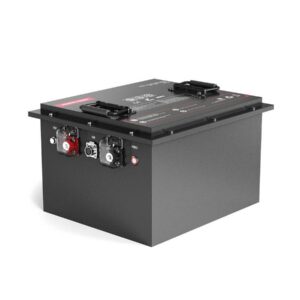
How do you convert amp hours to cca?
Converting amp-hours (Ah) to cold cranking amps (CCA) requires understanding their distinct roles: Ah measures energy capacity, while CCA reflects current output at 0°F for 30 seconds. For lead-acid batteries, a rough formula is CCA ≈ Ah × 7.5, but this varies with chemistry and temperature. Lithium batteries (e.g., LiFePO4) lack direct CCA ratings but deliver higher burst currents due to lower internal resistance.
Best Replacement 12V Battery Brands for Toyota Prius
What’s the relationship between Ah and CCA?
Amp-hours quantify total energy storage, while CCA measures peak current for engine starts. Lead-acid batteries follow a 7.5:1 CCA/Ah ratio, but lithium-ion variants break this pattern due to superior discharge efficiency. Pro Tip: Use a digital CCA tester for accurate readings instead of relying solely on formulas.

Ah and CCA are like a water tank vs. a firehose—Ah is the tank’s volume, CCA the hose’s gush rate. For example, a 50Ah lead-acid battery typically provides ~375 CCA. However, AGM batteries may hit 8:1 ratios due to lower internal resistance. But what happens if you apply the 7.5x rule to lithium? You’ll overestimate CCA because lithium cells prioritize sustained discharge over short bursts. Always check manufacturer specs for lithium cranking amps. Pro Tip: For EVs, prioritize Ah for range; for ICE vehicles, focus on CCA for reliable starts.
Why can’t Ah and CCA be directly converted?
Ah-to-CCA conversion isn’t linear due to variables like plate thickness and electrolyte chemistry. While lead-acid batteries have empirical ratios, lithium’s flat discharge curve and BMS limits make CCA estimates unreliable. Warning: Using lead-acid formulas for LiFePO4 may cause starter motor damage from excessive current.
Think of CCA as a sprint and Ah as a marathon—they measure different performance aspects. A 100Ah marine battery might deliver 750 CCA, but its primary purpose is deep-cycle energy storage, not cranking. In contrast, a 50Ah starter battery could pack 500 CCA through thicker lead plates. Temperature also warps this relationship: at -20°C, lead-acid CCA plummets 40%, while lithium only loses 15%. Pro Tip: For hybrid batteries, prioritize Ah; for winter-driven vehicles, oversize CCA by 20%.
| Battery Type | CCA/Ah Ratio | Temperature Sensitivity |
|---|---|---|
| Flooded Lead-Acid | 7.0–7.5:1 | High |
| AGM | 7.8–8.3:1 | Moderate |
| LiFePO4 | N/A (No CCA spec) | Low |
How does battery chemistry affect Ah-CCA conversion?
Lead-acid batteries use porous plates for high surface area, enabling strong CCA. Lithium-ion cells leverage low internal resistance for high current but aren’t CCA-rated. Pro Tip: AGM batteries outperform flooded ones in CCA consistency due to acid suspension.
Chemistry dictates the Ah-CCA tradeoff. Flooded lead-acid sacrifices cycle life for cranking power—thicker plates increase CCA but reduce Ah/kg. Lithium’s 3.2V cells can discharge at 5C rates (e.g., 100Ah = 500A), but BMS often limits this to protect cells. For example, a Dakota Lithium 12V 100Ah battery supports 400A bursts, equivalent to 400 “CCA,” but isn’t certified as such. Always verify peak discharge rates in lithium specs rather than assuming CCA equivalency.
Does temperature impact Ah-CCA relationships?
Extreme cold reduces CCA by slowing chemical reactions. Lead-acid batteries lose ~1% CCA per °F below 32°F, while lithium loses 0.5%. Pro Tip: Preheat lead-acid batteries in winter—a 15-minute headlight load can boost CCA by 10%.
At -20°F, a 600 CCA lead-acid battery effectively delivers 360 CCA, risking failed starts. Lithium’s solid-state design handles cold better—a 400A-rated LiFePO4 pack still pushes 340A. This is why Arctic vehicles increasingly adopt lithium jump starters. But remember, Ah capacity also drops in cold: a 100Ah lithium battery at -20°F acts like 85Ah. Use insulation blankets to mitigate capacity loss.
| Condition | Lead-Acid CCA | Lithium Burst Current |
|---|---|---|
| 70°F | 100% | 100% |
| 32°F | 80% | 95% |
| -20°F | 60% | 85% |
Battery Expert Insight
Ah-to-CCA conversion is battery chemistry-dependent. Lead-acid’s 7.5x rule works for estimation but ignores aging and temperature. Lithium batteries redefine cranking power with 3–5C discharge rates, though they lack formal CCA ratings. Always pair lithium with a BMS that allows brief high-current bursts for engine starts without tripping protection circuits.
FAQs
Is there a universal Ah-to-CCA formula?
No—use 7.5x for lead-acid, but verify lithium’s peak discharge rate. AGM batteries often exceed 8x ratios due to optimized lead grids.
Can lithium batteries provide CCA?
Yes, but they’re rated for max continuous/discharge current (e.g., 100Ah LiFePO4 = 100A continuous, 200A surge). Convert to “CCA equivalent” by doubling surge ratings.
Why does my 50Ah battery have 400 CCA?
It’s likely an AGM or EFB battery with reinforced plates—these trade depth of discharge for higher cranking amps.
